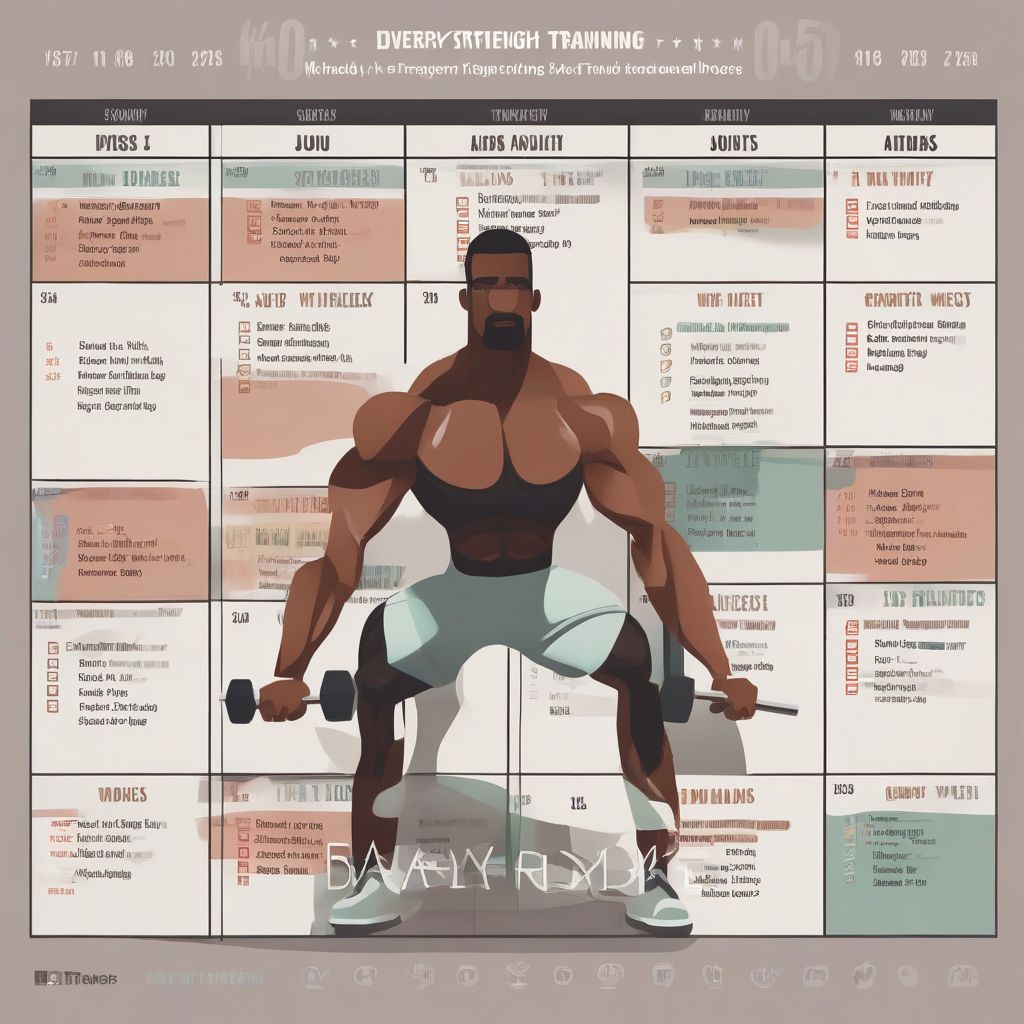Ever dream of feeling stronger, more energetic, and confident in your own skin? Strength training is a powerful tool to achieve all of these, but knowing where to start can be daunting. Creating a well-structured weekly strength training schedule is key to maximizing your results while minimizing the risk of injury. Let’s dive into how to build a plan that works for you.
Understanding Your Goals and Fitness Level
Before jumping into sets and reps, it’s crucial to define your goals. Are you looking to build muscle mass, increase strength, improve overall fitness, or train for a specific sport? Your goals will dictate the type of training, exercises, and frequency you choose. Similarly, your current fitness level plays a significant role. Beginners will need a different approach compared to seasoned lifters.
Setting Realistic Expectations
As a certified nutritionist and meal prep coach, I often remind my clients that sustainable progress takes time. There’s no magic bullet. Start slowly and gradually increase the intensity and volume of your workouts as you get stronger. “Rome wasn’t built in a day,” as the saying goes. Consistency is key to long-term success.
Choosing the Right Exercises
A balanced strength training program should target all major muscle groups:
- Legs: Squats, lunges, deadlifts, leg press, calf raises
- Back: Pull-ups, rows, lat pulldowns, back extensions
- Chest: Bench press, push-ups, dumbbell flyes, incline press
- Shoulders: Overhead press, lateral raises, front raises, reverse flyes
- Arms: Bicep curls, triceps extensions, hammer curls, dips
Compound vs. Isolation Exercises
Prioritize compound exercises like squats, deadlifts, and bench presses. These movements engage multiple muscle groups simultaneously, leading to greater strength gains and calorie burn. Incorporate isolation exercises like bicep curls and triceps extensions to target specific muscles and refine your physique.
 Weekly Strength Training Schedule
Weekly Strength Training Schedule
Determining Frequency and Volume
How often you train each week depends on your fitness level, goals, and recovery capacity. Beginners can start with 2-3 full-body workouts per week, allowing for rest days in between. More experienced individuals can train 3-4 times a week, utilizing split routines (e.g., upper body/lower body or push/pull/legs). Volume refers to the total amount of work performed, typically measured by sets and repetitions. A common recommendation is 3-4 sets of 8-12 repetitions for each exercise.
Listening to Your Body
Pay attention to your body’s signals. Rest is just as important as training. Adequate rest allows your muscles to recover and rebuild, preventing overtraining and injuries. Don’t hesitate to adjust your schedule based on how you feel. Dr. Michael Smith, a leading sports physician, emphasizes, “Rest and recovery are not signs of weakness, but rather essential components of a successful training program.”
Structuring Your Weekly Schedule
Here are a few example weekly strength training schedules:
Beginner (Full-Body, 3 days/week):
- Monday: Full Body
- Tuesday: Rest
- Wednesday: Rest
- Thursday: Full Body
- Friday: Rest
- Saturday: Rest
- Sunday: Full Body
Intermediate (Upper/Lower Split, 4 days/week):
- Monday: Upper Body
- Tuesday: Lower Body
- Wednesday: Rest
- Thursday: Upper Body
- Friday: Lower Body
- Saturday: Rest
- Sunday: Rest
Advanced (Push/Pull/Legs, 6 days/week):
- Monday: Push
- Tuesday: Pull
- Wednesday: Legs
- Thursday: Push
- Friday: Pull
- Saturday: Legs
- Sunday: Rest
Progressive Overload
To continuously challenge your muscles and stimulate growth, gradually increase the weight, reps, or sets over time. This principle, known as progressive overload, is crucial for making consistent gains. Even small increments can lead to significant improvements over time.
The Importance of Nutrition and Recovery
Strength training goes hand-in-hand with proper nutrition and recovery. Fuel your body with a balanced diet rich in protein, carbohydrates, and healthy fats. Protein is especially important for muscle repair and growth. Prioritize adequate sleep, hydration, and stress management to optimize recovery.
Fueling Your Workouts
As a nutritionist, I recommend consuming a pre-workout meal or snack containing carbohydrates and protein for sustained energy. Post-workout, replenish your glycogen stores and provide your muscles with the building blocks they need with a protein-rich meal or shake.
Tracking Your Progress and Staying Motivated
Keep a training log to track your workouts, sets, reps, and weight lifted. This allows you to monitor your progress and identify areas for improvement. Set realistic goals, celebrate your achievements, and find a workout buddy or join a fitness community for support and motivation. Remember, consistency is key to achieving long-term success.
Conclusion
Creating a weekly strength training schedule tailored to your goals and fitness level is a vital step towards a stronger, healthier you. By following the principles outlined in this article, focusing on proper nutrition and recovery, and staying consistent, you can achieve remarkable results. Remember to listen to your body, adjust your schedule as needed, and enjoy the journey. Now, what questions do you have about building your own strength training plan? Share your thoughts and experiences in the comments below!



